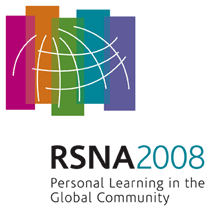
Abstract Archives of the RSNA, 2008
Carla Meeuwis, Presenter: Nothing to Disclose
G Stapper, Abstract Co-Author: Nothing to Disclose
A.M. Fernandez Gallardo, Abstract Co-Author: Nothing to Disclose
Willem P. Mali MD, PhD, Abstract Co-Author: Nothing to Disclose
Maurice A. van den Bosch MD, PhD, Abstract Co-Author: Nothing to Disclose
Wouter Veldhuis, Abstract Co-Author: Nothing to Disclose
MRI of the breast is a promising diagnostic modality with a high sensitivity for breast cancer. The main drawback is its relatively low specificity. To address this limitation, computer-aided detection (CAD) systems have been developed that automate processing and kinetic analysis tasks usually performed manually by MRI technologists and radiologists. Automation may improve consistency and detection rate, but also provides new analysis methods, such as kinetic curve-thresholding, not available with manual interpretation. This study was performed to compare the consistency and accuracy of 3.0T breast MRI interpretation, with manual and and fully automated kinetic analysis.
Sixty five consecutive patients with a total of 71 biopsy- or surgically-proven lesions were included. Initial MR interpretation was done on an Advantage Workstation (Philips Viewforum, Best, The Netherlands), which allows manual assessment of enhancement kinetics. Retrospectively, all MRI examinations were processed by CADstream (Confirma, Inc., Kirkland, WA), a commercially available computer-aided detection system. CADstream data sets were interpreted based on consensus view by two experienced breast radiologists, as well as by two residents, all of whom were blinded to the pathology reports. For each lesion automated analysis of kinetic enhancement was evaluated separately at both 50% and 100% thresholds.
Forty nine malignant and 22 benign lesions were evaluated. The initial interpretation on the advantage workstation showed a sensitivity of 93,6% and a specificity of 81,8%. Using threshold-enhancement alone, the sensitivity and specificity of CAD were 97,9% and 86,4% for the 50% threshold and 97,9% and 90% for the 100% threshold.
For 3.0T breast MRI, the use of a CAD system significantly improved the sensitivity and specificity of interpretation compared with manual analysis of enhancement kinetics.
For 3.0T breast MRI, the use of a CAD-system for the analysis of enhancement-kinetics can significantly improve the discrimination between benign and malignant lesions compared to manual analysis.
Meeuwis, C,
Stapper, G,
Fernandez Gallardo, A,
Mali, W,
van den Bosch, M,
Veldhuis, W,
Computer-aided Detection (CAD) for Breast MRI: Evaluation of Efficacy at 3.0 T. Radiological Society of North America 2008 Scientific Assembly and Annual Meeting, February 18 - February 20, 2008 ,Chicago IL.
http://archive.rsna.org/2008/6019748.html

